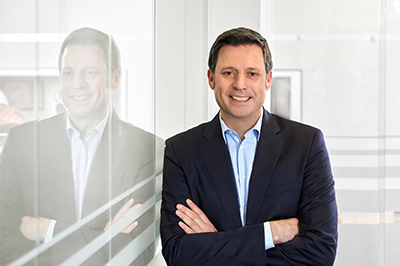Trendtalk: MES & Platform

In conversation with Markus Zalud
Digital platforms are increasingly becoming part of smart factory strategies and aim to enable vertical and horizontal integration for the company in a way that conserves resources.
In addition, the buzzword “resource efficiency” is currently shaping the challenges on the shopfloor. Digital Manufacturing magazine asked to talk about current trends in classic MES solutions and the manufacturing platform.
What trends are currently determining the development of MES systems and platforms?
Short-lived buzzwords are constantly changing. On the longer stage, we want to provide our users with easy-to-use tools that perform at a high level of quality despite the shortage of specialists. A fast time to solution and easy further development is essential – for example through ‘low-code’. We also believe that the IT provider who pursues an integrative approach to system architecture will come out on top.
What other differences and advantages do you see with an MES compared to a possible manufacturing IT platform?
A manufacturing execution system like ours is more than ever the stable foundation in the digital manufacturing world. Core functions such as Advanced Planning & Scheduling, PDC and MDC are anchored in it. However, when it comes to future-proofing production, there is no way around using the full power of an integrative and adaptable manufacturing platform built on top of it. For example, our users are able to download entire software modules quickly and easily from a new ‘Solution Store‘ and use them on their own.
From our point of view, it is important to consider MES and manufacturing platform together. We realize this under the collective term cronetworld and thus pave the way for our users to their Smart Factory.

We believe that the IT provider who pursues an integrative approach to system architecture will come out on top.
Material shortages as well as rising raw material and energy prices: How can an MES contribute to solving these challenges?
Those who use MES systems generally achieve an increase in efficiency within their own company, which has an impact on energy efficiency in the case of predictive AI scenarios, for example. Other examples include reduced scrap, setup optimization, and many more optimizations that help improve efficiency at all levels. Additionally, energy management capabilities help provide transparency in planning, recording, controlling and analyzing energy consumption. This enables manufacturing companies to quickly allocate consumption, identify ‘energy hogs’ and react accordingly. In this respect: An MES can help in any case, but it cannot eliminate all problems.
Answers to these questions from other experts are provided in Digital Manufacturing Magazine 05/22 or online at:

